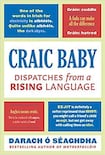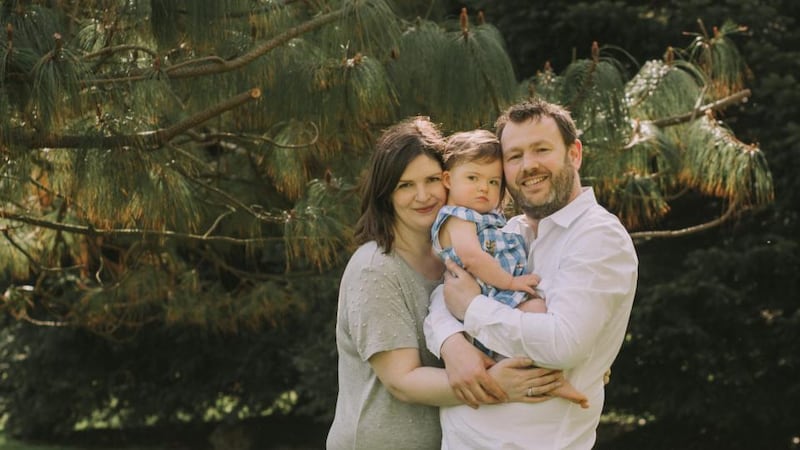
‘This book is not intended to teach Irish or to defend State policies pertaining to the Irish language in the Republic of Ireland and Northern Ireland. It’s not that I don’t care about such policies; on the contrary. If someone could promise me that by writing that book I could end all those rehearsed, repetitive conversations forever, I’d write it.’
Thus opens this highly entertaining collection of articles, which read like well-written blogs, on diverse aspects of the Irish language. The literature about Irish language, the fortunes and misfortunes thereof, from beginning to end of the 20th century has been largely earnest, scholarly, touchingly hopeful or more often gloomily pessimistic. In the 21st century, something has changed and there have been some humorous and light-hearted works "about" Irish, such as Manachán Magan's TV series. Darach Ó Séaghdha's books, this and the previous Motherfoclóir, belong to this broad general category. The "Gaeilgeoirs laugh at Irish" school, maybe?
There are several topics covered in Craic Baby: Dispatches from a Rising Language – multilingualism, Brehon Law, Gaelscoils – but the prevailing theme is the lexicon: "An Alltán' (monster or wild man) should not be confused with scalltán (a tiny puny creature like a nestling)"
This sort of dictionary joke was, of course, the stock in trade of Brian Ó Nualláin – an acknowledged influence on Ó Séaghdha – especially in his "Crúiscín Lán" column in The Irish Times. Just quoting English equivalents of certain Irish words or phrases from Dinneen's dictionary could be hilarious. Darach is perhaps culling his words from one of the online foclóirs – and, while the results are sometimes funny, they don't always match Brian Ó Nualláin's for wit. I hate to be curmudgeonly, some lines made me groan, not laugh: "Speaking of alcohol, the Irish for food is bia, not to be confused with the Australian pronunciation of beer."
Gaelscoil success
More often, however, Darach Ó Séaghdha’s observations and reflections are intelligent and interesting. His chapter on ‘”The Power of Gaelscoil”, in which he discusses the strange phenomenon of the success of Gaelscoils, by contrast with the traditional hostility to Gaeilge as a compulsory subject in all schools, is excellent. He dispels the myth now in circulation that they are “racist” because children of non-Irish have difficulty getting access to them (you don’t have to be Irish to learn Irish – another myth.You don’t even have to be a child, actually.) But he links the Gaelscoil phenomenon to interest in non-secular schools, academic competitiveness and property values – Synge Street went Gaelach when Portobello got rich. Like most of the serious issues, he touches on, the soundbite nature of his narrative doesn’t allow any extended discussion. Frequently an excellent comment is made, full of promise, and then the book hops swiftly on to some loosely connected (or unconnected) topic. It is as if the author believes that no reader is capable of concentrating on any subject – at least not if that subject is the Irish language – for longer than half a minute. He declares this in his preface: “An sgéal fada ní hé is fearr” (the longest tale is not the best). Indeed. But sometimes a good idea deserves more than a sentence or two. A blog is not a book.

The book has a structure more like that of a dream or stream of consciousness narrative than an intellectual construct, although its content is on the whole highly intellectual. By far the most effective and deep sections are the beginning and the end. Here, Darach Ó Séaghdha writes stunningly and movingly about his daughter, Lasaríona – the “Craic Baby” of the title.
Concept of ‘normal’
‘In March 1916 I was floating on a cloud . . . We were expecting our first child and we already knew it was a little girl . . . [She would be] clever and beautiful, of course . . . And obviously she would go to the Gaelscoil up the road.”
What her parents did not know – and this is also an Irish, if not a Gaeilge, thing, although Darach doesn’t mention this – was that Lasaríona had Down syndrome. He goes on to describe how he and his wife came to terms with the shock, readjusted their perspective on life, and recalibrated their concept of “normal”. The implication is that the Irish language is another kind of normal, different from English normal. “Our generation had been told how useless and pointless Irish was. But now our friends were telling us about their kids speaking Irish to each other on the way home from school.’
I’m not sure how valid is the suggestion that Irish is a bit like Down syndrome. But it’s clearly the case that our linguistic situation is different from “normal” language situations in most other countries. I always realise this when I try to explain it to foreigners, first trying to dispel their belief that Irish is a dialect of English – I’ve almost given up on that. Scéal fada is ea é! I would like Darach Ó Séaghda, clearly gifted and full of insights and ideas and humour, to write at greater length and depth about our scéal and teanga. He can do it. He would not be leadránach. And Gaeilge needs him.
Éilís Ní Dhuibhne is a writer. Her latest book is Twelve Thousand Days: A Memoir of Love and Loss












